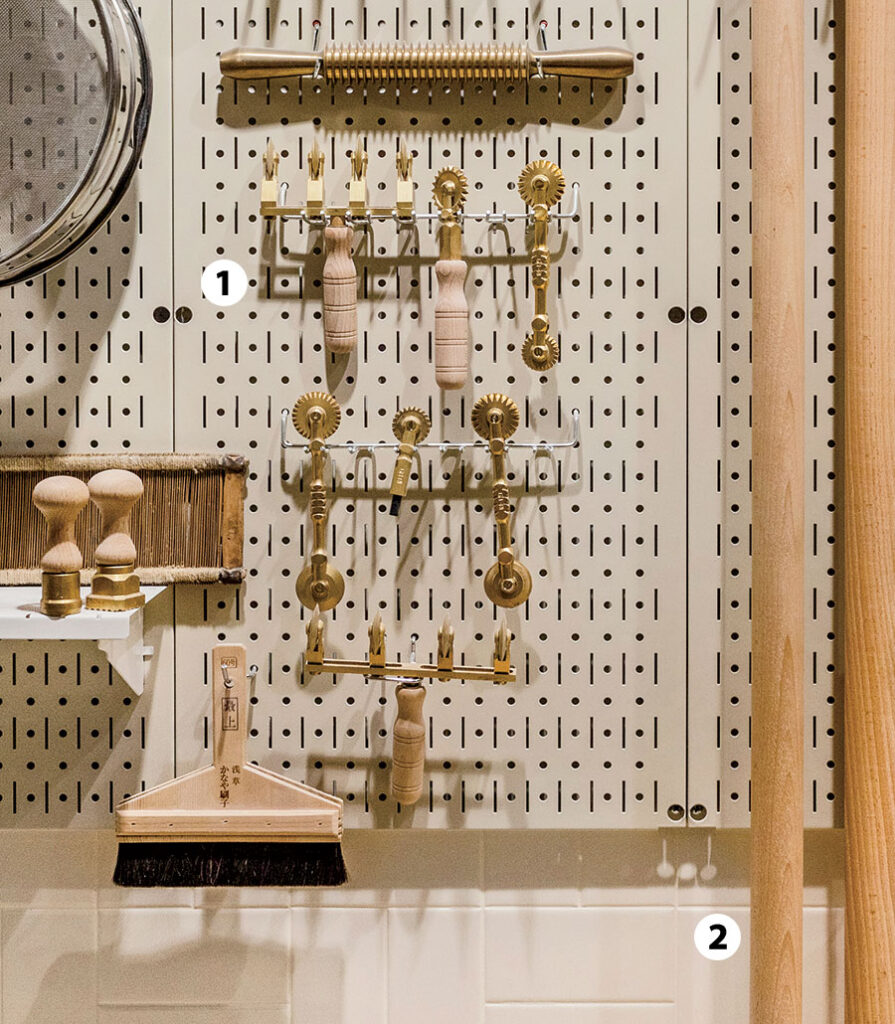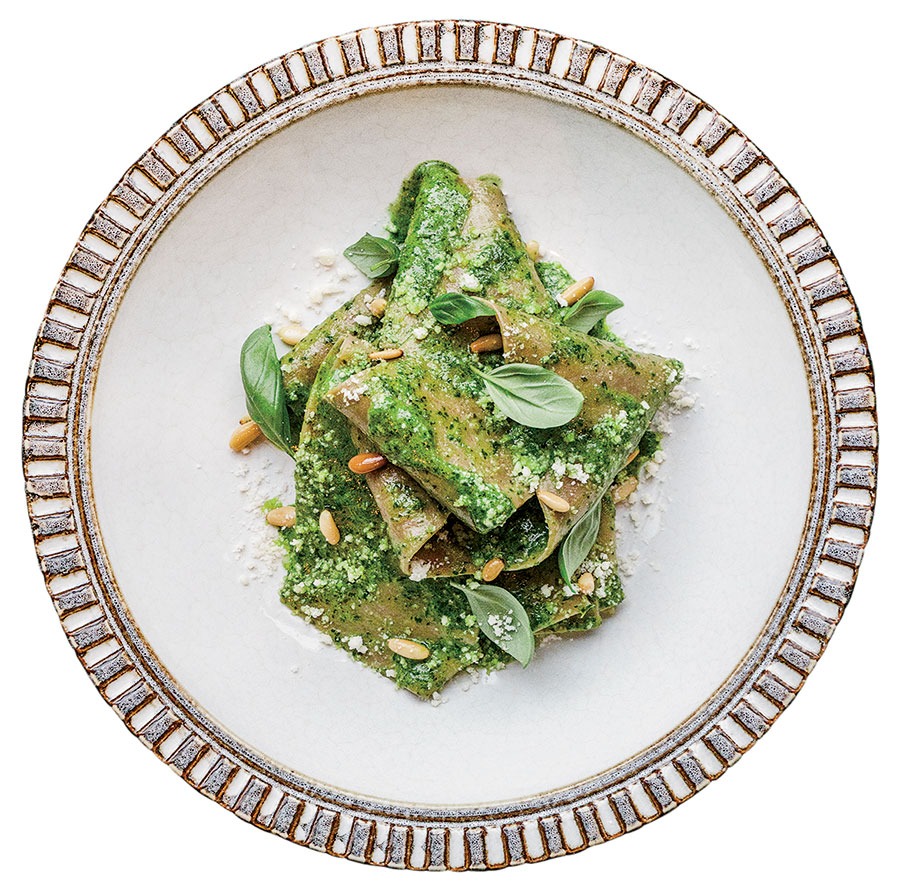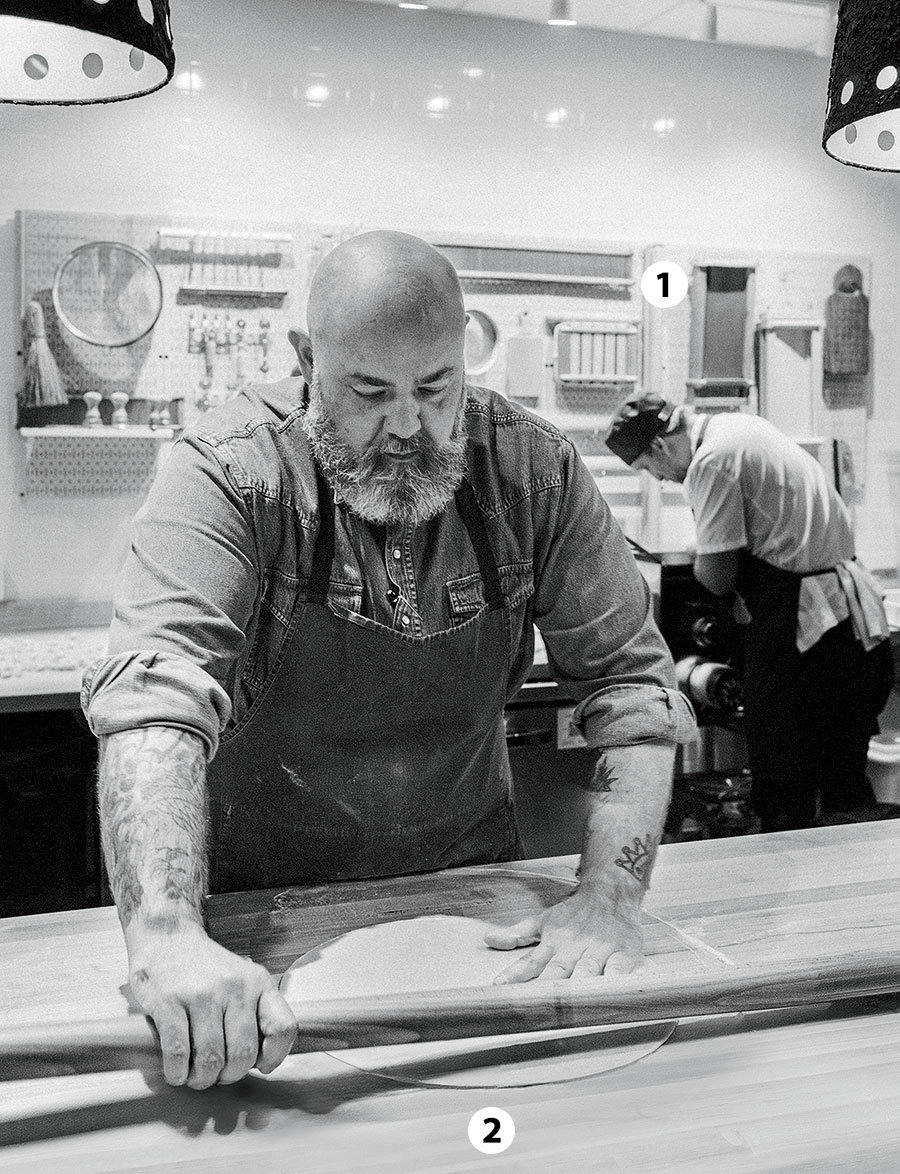When chef and restaurateur Evan Funke went to Italy in 2007 to study pasta making, he was struck by the ubiquity of “pasta laboratories,” where patrons could observe chefs at work. “A connection is built when a diner watches the pasta being made, then sits down and realizes that someone put their heart and soul into the dish,” he says. Funke has brought that tradition to the States. Tre Dita, located on the second floor of the St. Regis Chicago, is the Los Angeles–based chef’s first restaurant here and his third with a pasta lab (he has five spots in total). Its Tuscan menu features 10 pastas, all made with the requisite heart and soul combined with a technician’s eye for detail. Says Funke: “We try to control as many of the elements as possible — humidity, temperature, the storing of flour — in order to gain consistency in a handmade product.” 401 E. Wacker Dr., Loop
Above: 1. HYDROMETER “We use it to measure the relative humidity, relative temperature, and airflow. The ideal temperature is 65 to 68 degrees. Ideal humidity should sit around 55 percent. We run humidifiers and a dehumidifier preset to specific percentages.” 2. FLOUR “All we use is imported, organic, and Italian. We use 00, chestnut, tumminia, and pane nero di Castelvetrano. They’re stone ground, which leads to a very digestible product.”
Below: 1. TOOLS “There are about a dozen analog tools to emboss different textures.” 2. ROLLER “We mix the pasta by hand, and then it’s hand-rolled with a mattarello, not pressed through a machine.”

3 Pastas to Try
The skinny from Funke on some of his favorite Tre Dita dishes

1. Lasagne bastarde
“It’s a chestnut and soft wheat flour noodle. Chestnut flour was introduced during World War II when wheat was rationed. People gathered chestnuts and ground them into flour to stretch it. This is paired with a basil and garlic pesto that’s found in Genoa, a neighbor to Tuscany.”
2. Tagliatelle al ragù
“This is hand-rolled, hand-cut, gossamer-thin noodles dressed with pork ragù and the aromatics of the Tuscan countryside — wild fennel, rosemary, things of that nature.”
3. Linguine al limone
“I like to use as many elements from any specific ingredient as possible. Obviously the pasta is the centerpiece, but the lemon should smack you in the face. We make a lemon butter with lemon peel, lemon zest, lemon juice, and lemon leaf. Even the olive oil has been pressed with whole lemons.”




